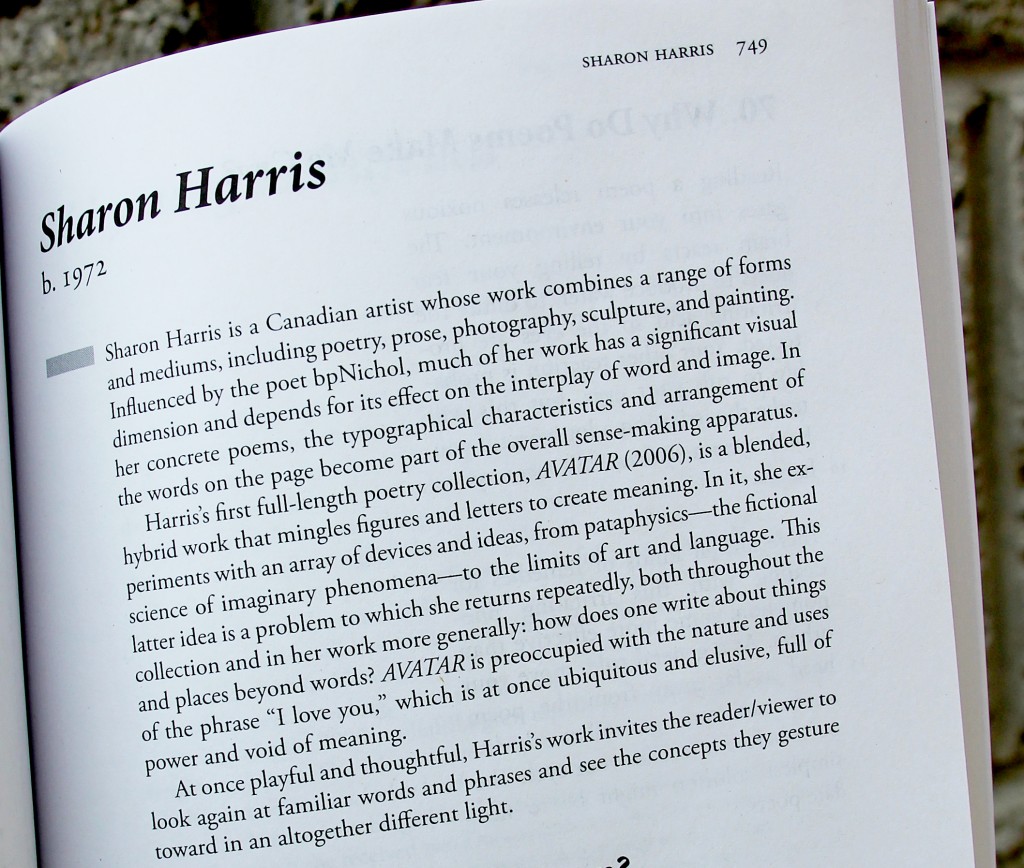
The latest version of The Broadview Introduction to Literature (Concise Edition) arrived today, and I love the bio written for me (“playful and thoughtful”- thank you!). So happy my poems are included.

The latest version of The Broadview Introduction to Literature (Concise Edition) arrived today, and I love the bio written for me (“playful and thoughtful”- thank you!). So happy my poems are included.
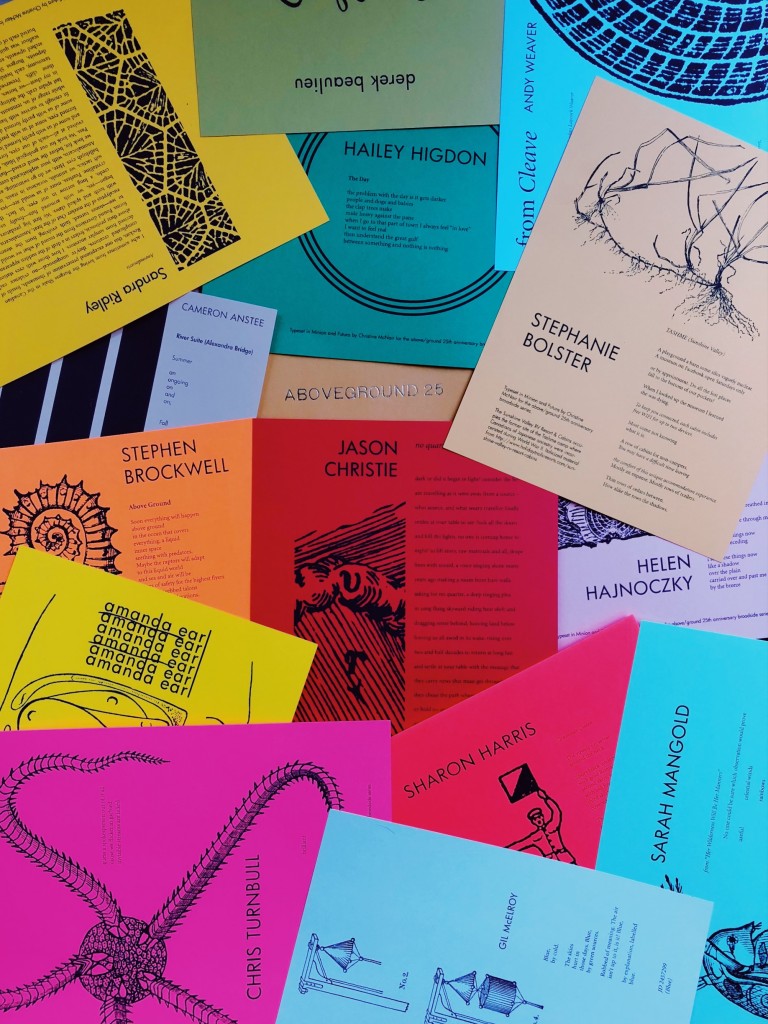
Absolutely thrilled to be included in above/ground press’s set of broadsides for its 25th anniversary.
25 years of poetry!
Congratulations, rob and Christine.
I can’t thank you enough.
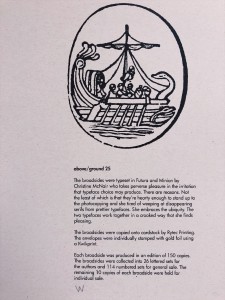
Such an interesting gardening season for me this year — my eye changed again. When I began eleven years ago, it was about aesthetics (making a neglected place “look” better); then, I gradually added edibles into the mix. For many seasons, I focused on exploring and growing fruits and vegetables which are also ornamental. I still care about these elements, but after this year, it doesn’t mean much to me if my garden is not attractive to native wildlife, too. After all, it’s their home. After some research, I focused on adding native plants that offer a succession of blooms for pollinators. So easy to do! For example, the goldenrods and asters are full of different bees — hundreds of them — today. They seed themselves, and if I object to their location, they are easily pulled. I must have watched the bees (including these green ones) for forty minutes yesterday, and I felt like I was transported to another world.
I think I’ve experienced a gradual transition from eye to heart along the way. I still appreciate a visually appealing garden, but without plants for pollinators and berries for birds, I don’t feel very much. I see tweaks, instead — places where wildlife-friendly plants and habitat could be swapped into the design. Otherwise, it feels dead to me, even though the plants are very much alive. We need to consider and discuss the life supported by a garden as thoroughly as we discuss colour, shape, and texture.
You may think you’re growing plants to beautify the neighbourhood or up your curb appeal, but you will grow, too. Gardens teach, heal, and feed on many levels; they have a quiet, sneaky way that grows people, as well as plants. When I first started gardening and building the soil, I found it literally “grounding” — not an insignificant benefit, if you live in a large city. Then, when I began growing fresh, healthy food, I felt nourished in ways I hadn’t before. Now, watching the land come to life with insects and birds, I feel connection. If you grow it (or just get out of the way and let nature take over a little), they will come.
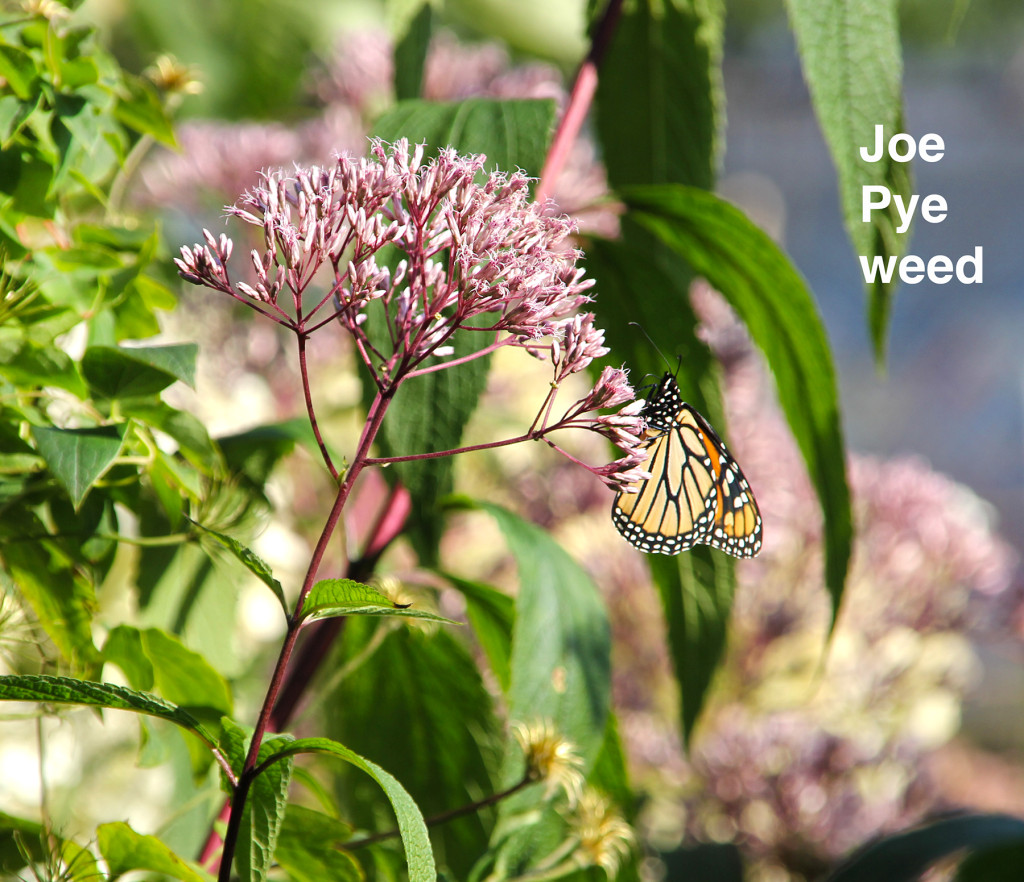
I like photographing people.
Two of my portraits can be found on recent BookThug titles Beautiful Children with Pet Foxes by Jennifer LoveGrove and False Friends by Stephen Cain.
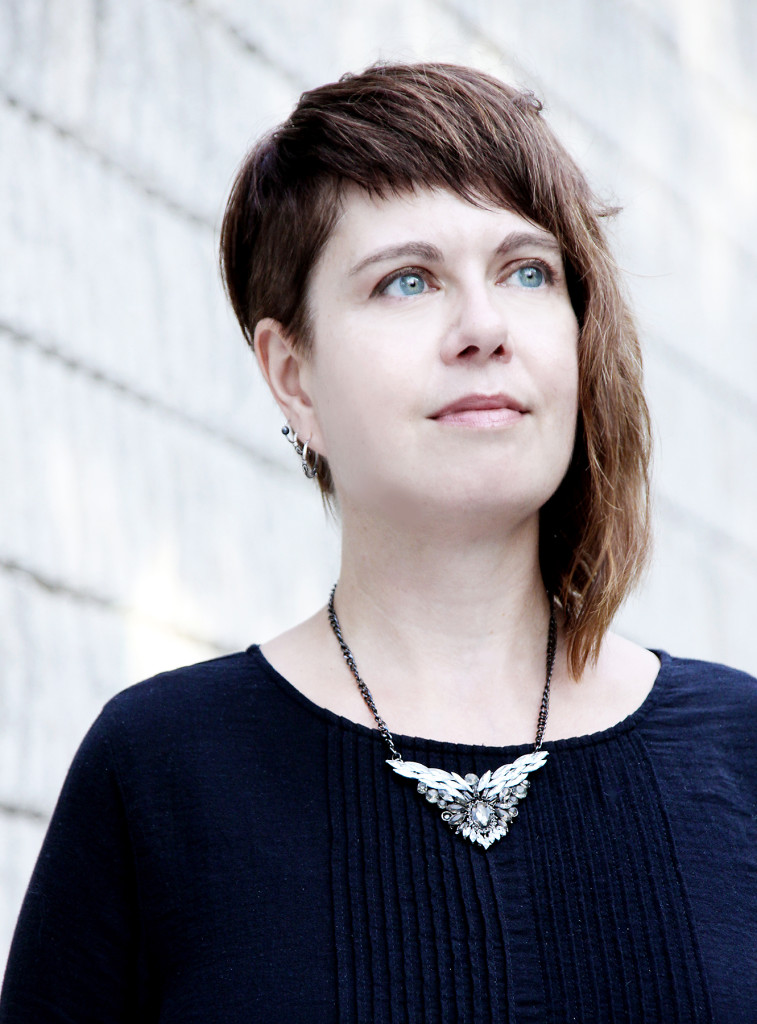
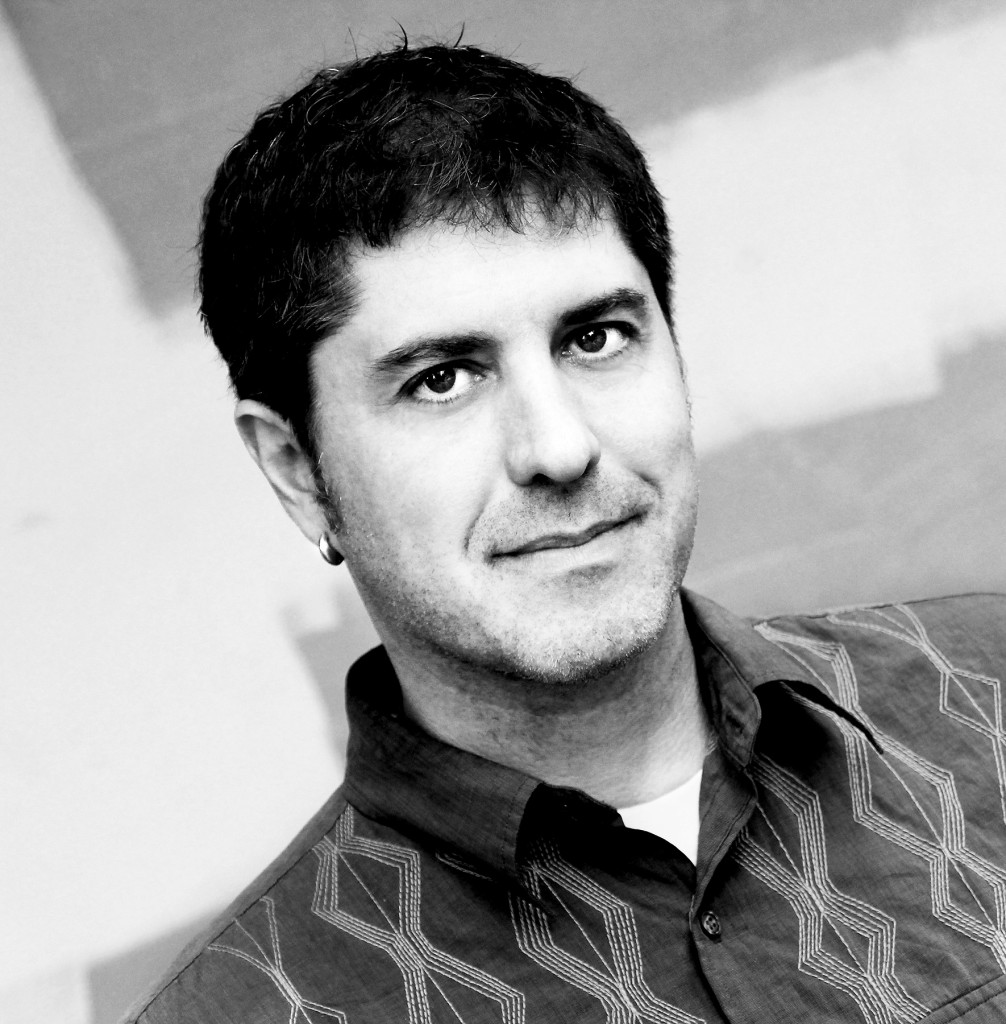
One of my photos also appears on the cover of False Friends. Love the tilted text by BookThug.
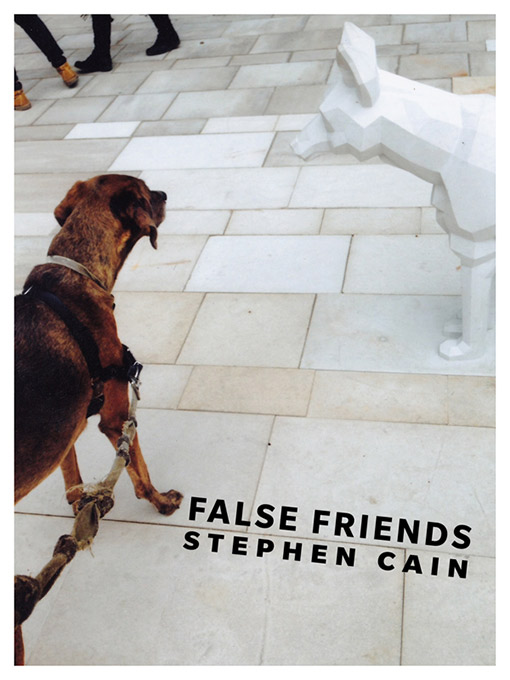
The fine people at Chaudiere Books posted my found poem, “FeMaLe,” as part of National Poetry Month.
Yes, National Poetry Month is in April. Yes, it is now September.
My last author photo was ten years ago, so I made this AlphaSelfie. Will invite others to take their own ABC selfies in it at poetry readings.
It has been a busy summer, but I’m really getting back to finishing those manuscripts this fall. Really.
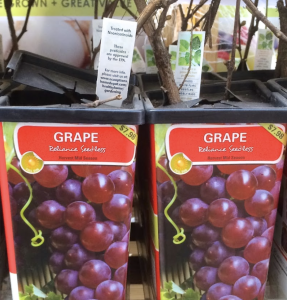 In my post on how to make your garden a safe habitat for endangered native bumblebees, I promised to provide you with a list of garden centres’ policies on neonicotinoid use, as I couldn’t find an updated round-up for the 2017 growing season. Buying plants treated with neonics only negates the best-intentioned bee-friendly garden plans. Many emails, phone calls, and even online live chats later, here are the stores’ responses, which I’ve left in their own words.
In my post on how to make your garden a safe habitat for endangered native bumblebees, I promised to provide you with a list of garden centres’ policies on neonicotinoid use, as I couldn’t find an updated round-up for the 2017 growing season. Buying plants treated with neonics only negates the best-intentioned bee-friendly garden plans. Many emails, phone calls, and even online live chats later, here are the stores’ responses, which I’ve left in their own words.
RONA
Neonicotinoids are pesticides believed to have adverse effects on bee populations. For a list of plants treated with neonicotinoids, please see a garden centre employee. MORE THAN 95% OF OUR PLANTS WERE GROWN WITHOUT THE USE OF NEONICOTINOIDS. RONA congratulates it suppliers for reducing the use of these pesticides and for helping our customers create bee-friendly gardens. Our suppliers continue to work on ways to reduce the use of pesticides through the use of integrated pest management strategies.
(Email response)
WALMART
The items purchased are free from neonicotinoids. Our partnered local grower Avon Valley does not use neonicotinoids on any plants or flowers.
(FB Page response)
HOME DEPOT
The Home Depot Canada is deeply engaged in understanding the relationship of certain insecticides on our live goods and the decline in the honey-bee population. We’ve been in communication with government agencies, the insecticide industry and our suppliers to understand the science and monitor research. Because we are committed to safeguarding the health of these critical pollinators, we are actively working with our live goods suppliers to find alternative insecticides. In addition to requiring all of our live goods suppliers to label Neonicotinoid-treated plants, our suppliers have significantly reduced the number of plants that they treat with neonicotinoids. We will continue this decrease regulation until we have a complete phase-out of neonicotinoid use by end of 2018, unless federal or provincial regulation requires neonic treatments, or if undisputed science proves that the use of neonicotinoids on our live goods does not have a lethal or sublethal effect on pollinators.
Regards, Returning Plants: We are committed to taking care of our customers. If a customer wants to return a plant as a result of reading a story, we will honour this.
(Email response)
LOWE’S
Lowe’s did not get back to me with info for 2017. Response to my first email said to call the local store or to email head office. When I called the local store, an employee who had never heard of neonics directed my call to a place where it was never answered, without voice mail. Head office did not write back. In an online ‘help’ chat, I was advised again to call my local store or to contact head office. I gave up.
In a 2015 Friends Of The Earth press release, the environmental organization listed Lowe’s commitments as such:
LOBLAWS/NO FRILLS
“There is no generic info…growing information is different from plant to plant. Call us and provide the barcode. We can look it up.”
(Phone conversation, after two unanswered emails)
CANADIAN TIRE
“Every store is individually owned and sources plants from local growers. You have to contact each store.”
(Phone conversation with head office, after unanswered email)
Local store manager had never heard of neonicotinoids. When I said I was writing a “round-up” of garden centres, he replied that they have Roundup™. He said they source from 25 different nurseries, from Florida to Niagara, adding that they’re “earth-friendly.”
Information presented in this post is not an endorsement for any particular garden centre. These policies apply across Canada, but next, I’ll do a round-up of Toronto’s independently-owned nurseries.

If you’re heading to the Green Living Show this weekend, I’ll be part of a garden chat about growing food in urban spaces at Alternatives Journal‘s booth. Above are goji berries cropping for the second time last fall in the guerrilla/community garden.
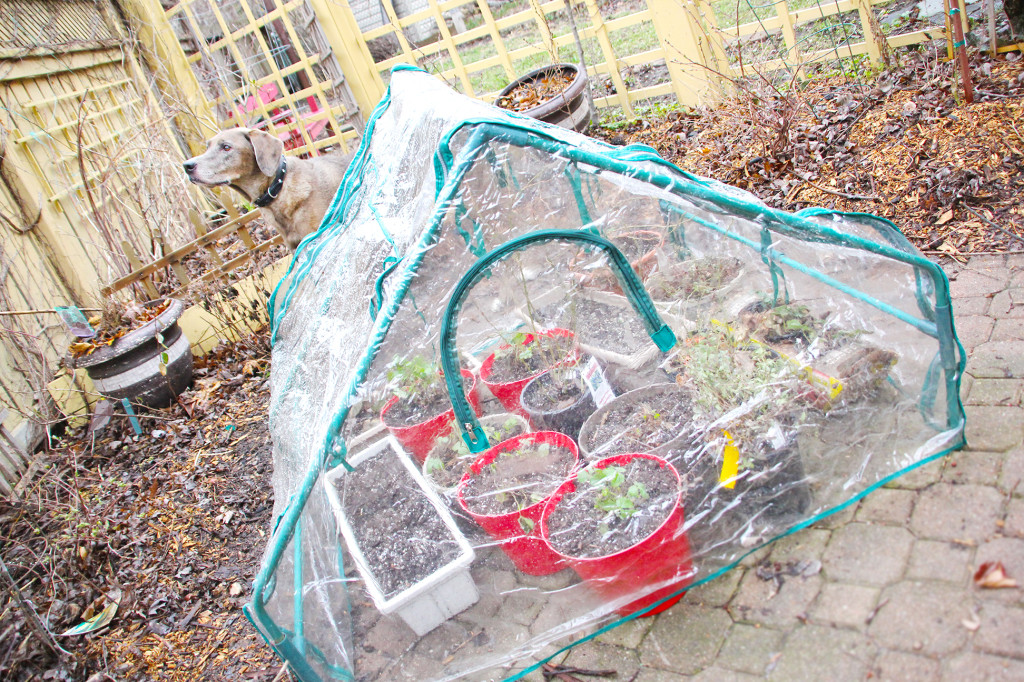
The cold frame finally came out of storage yesterday to shelter some alpine strawberries, blueberries, loganberries, cranberries, and strawberries that taste like raspberries called ‘framberries.’ Every plant (except for a weird little Japanese Maple) in this pic is edible – just ask the dog, who eats all of it if I’m not careful!
I’ve been growing food in different urban conditions for the past ten years: shady backyards, sunny allotment gardens, various types of containers indoors and out, school gardens with kids, and even guerrilla gardens. To discover what grows best and easiest in Toronto’s climate and conditions, I’ve been studying and testing fruit trees, berries, and vegetables.
Please come by and tell me what you’re growing. And if you’re into permaculture or forest gardening, we really have to talk!
Date of Chat: Sat, April 8, 2017
Time of Chat: 1 PM
Topic: Growing food in your yard or community.
Location of the show: Metro Toronto Convention Centre, North Building (on Front Street)
Booth: Alternatives Booth #1338
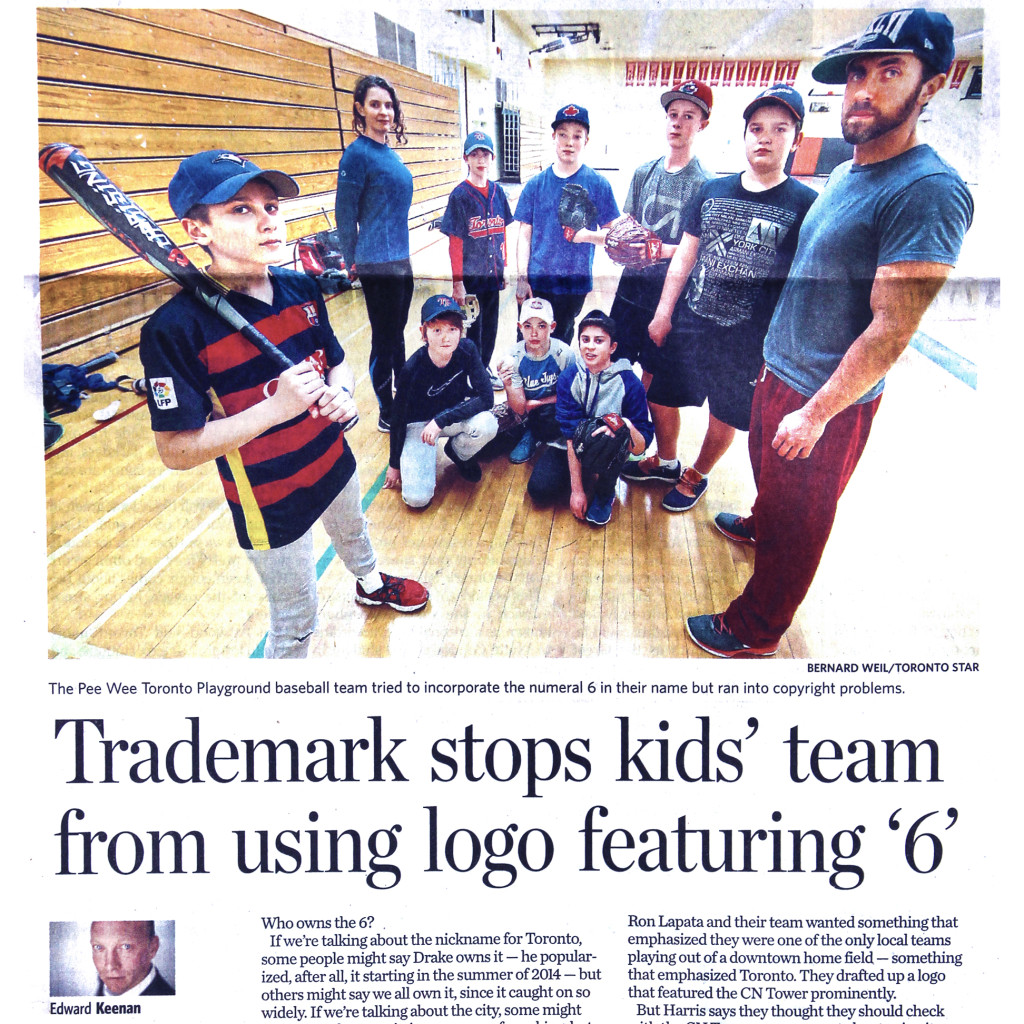
While redesigning the uniforms for my son’s baseball team, we coaches discovered that someone in Toronto – the 6ix – had registered a trademark on”six or any variation of six (6).” We couldn’t believe it!
How do you copyright a number? I reached out to the Toronto Star because the story was bigger than our team uniform – it was a story about Toronto and its newest nickname.
Edward Keenan did some excellent sleuthing, contacting copyright experts and a couple of corporate legal departments. I won’t spoil the story for you, but he found that the copyright does not belong to Drake.
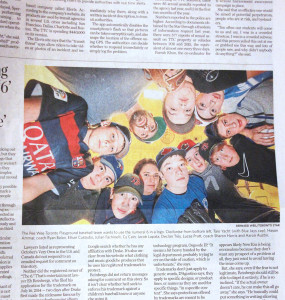
I’ve been in baseball immersion since January, as I’m coaching rep for the first time. Forty hours of coaching courses, stacks of baseball books, and countless hours of internet research (and watching too many World Baseball Classic games) later, I can’t wait to get outside. Still posting baseball photos at @fieldsofdreams.toronto on Instagram.

“Bumble bees are dying off, vanishing from our farms, gardens, and parks, where they were once found in great numbers.”
-Rebecca Riley, Natural Resources Defense Council Senior Attorney, in a statement regarding the Rusty-patch Bumblebee’s new endangered status in the U.S. In Canada, it was listed in 2012.
It is thought that some of our native North American bumblebee populations are declining due to loss of habitat, use of pesticides, pathogens, climate change, and competition from non-native bees. With a few tweaks, even the smallest pesticide-free urban garden can be transformed into a safe habitat for Toronto’s native bumblebee species.
FLOWERS
There are too many bumblebee-friendly plants that grow in Toronto to list, but the following are widely available:
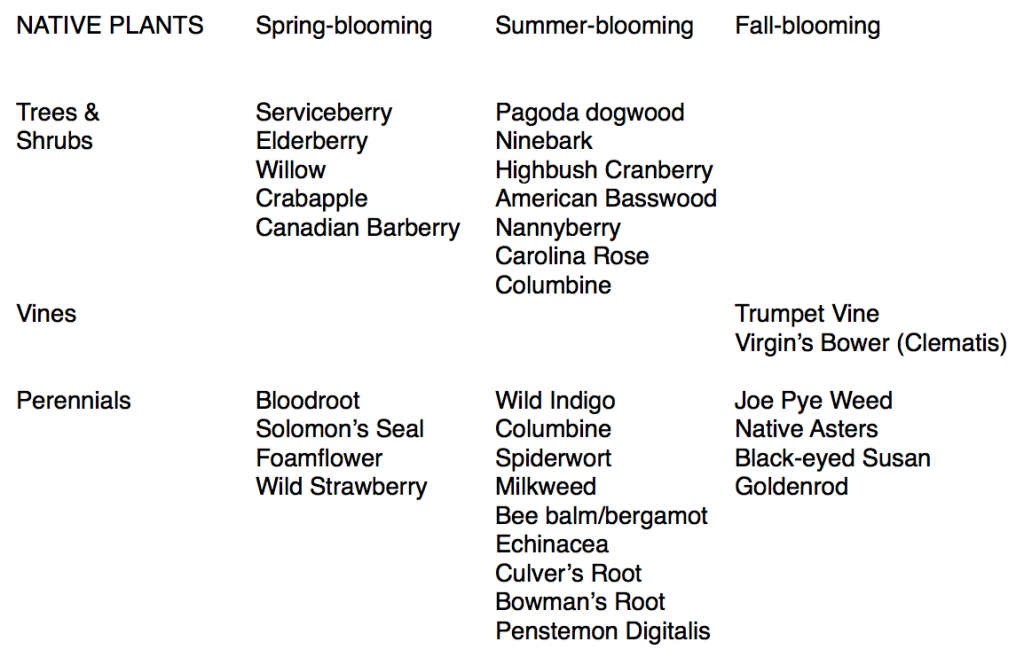
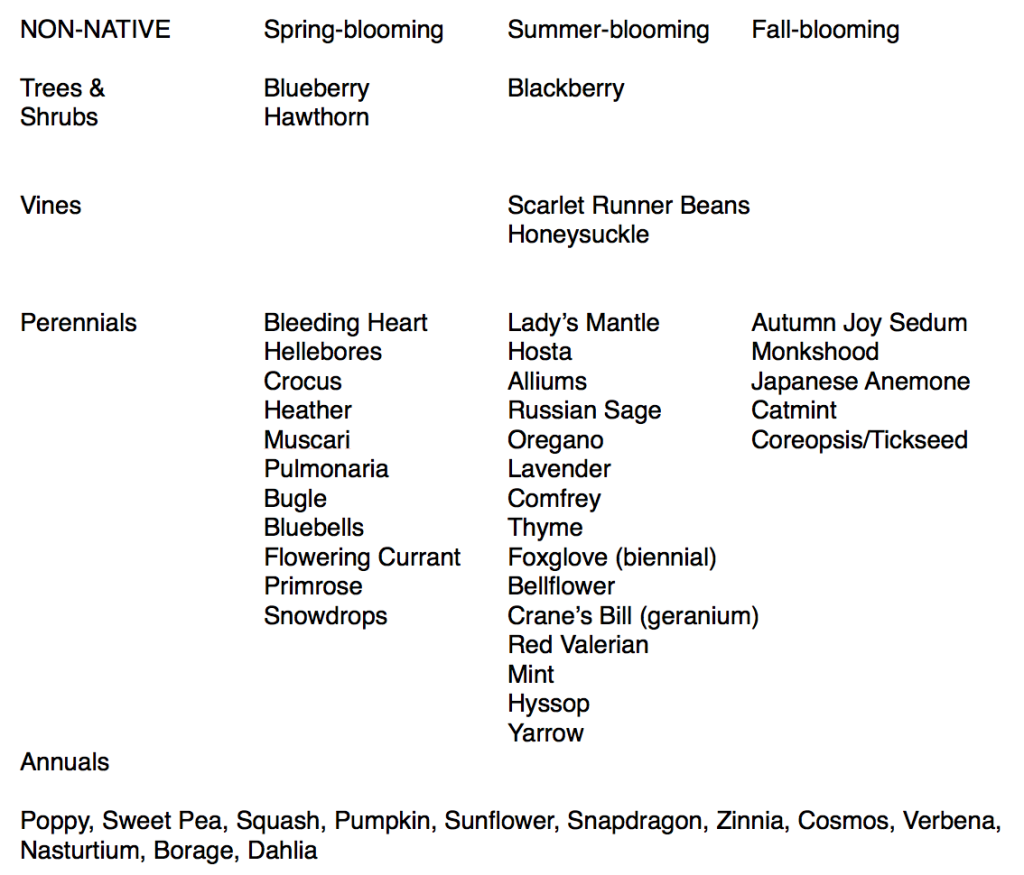

HABITAT
Sources: David Suzuki Foundation, Toronto Master Gardeners, Cornell University’s Department of Entomology Outreach, The Xerces Society, Savethebumblebees.com, North American Native Plant Society. Huge thanks to the Toronto Gardeners FB group for workshopping these ideas with me! These are not definitive guidelines as I am not an expert; I am offering Toronto-based info which was collected for my own garden design.
UPCOMING NATIVE PLANT SALES IN TORONTO
High Park Native Plant Sale: May 7, 2017 at the greenhouse (11 am-2 pm). TTC/walking/cycling is suggested as there will be many people in the park; the cherry trees will likely be in bloom. Cash only.
Toronto Botanical Garden Plant Sale: May 11-14, 777 Lawrence Avenue East. “We’ll be expanding our native plant category by partnering with St. Williams Nursery and Ecology Centre who will be bringing uncommon specimens and high impact native plants.”
North American Native Plant Society Native Plant Sales: East end ~ May 20, 2017 at Artisans at Work, 2071 Danforth Ave. (11 am-4 pm). West end ~ May 28, 2017 at Christie Pits (south end), Bloor & Christie (12 pm-4 pm). Debit/Credit & Cash.
NATIVE PLANT NURSERIES
I do not see a dedicated native plant nursery listed within Toronto’s boundaries, but most garden centres allot a section to native and/or “bee-friendly” plants. Many of the plants listed above are widely available, but must be free of neonicotinoids ( list of garden centre policies for 2017 coming soon).
Evergreen Garden Market “Toronto’s widest selection of Ontario native flowers, plants and trees for gardens of all sizes.” Evergreen Brick Works, 550 Bayview Ave.
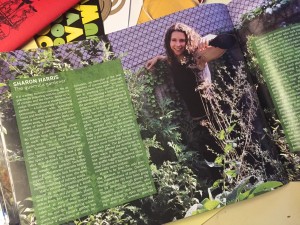
Spacing Magazine named me of of “12 Extraordinary Toronto Women Changing the City’s Public Realm.” Such an honour, and a surprise! Thanks to Amy Lavender Harris for writing a thoughtful article about my work.